Lighting plays a crucial role in the functionality and aesthetics of a modern kitchen. It not only illuminates the space but also enhances the overall design, creating a welcoming atmosphere. Modern kitchen lighting ideas encompass a variety of styles, from sleek and minimalist to bold and statement-making. Here’s an in-depth look at different lighting solutions that can transform your kitchen into a stylish and functional space.

Pendant Lighting for a Modern Touch
Stylish and Versatile Designs
Pendant lighting is a quintessential choice for modern kitchens, offering both style and function. These hanging fixtures come in a variety of shapes, sizes, and materials, making them versatile enough to suit any kitchen design. Glass pendants can provide a sleek, minimalistic look, while metal or wood finishes add warmth and texture. Modern pendants often feature clean lines and geometric shapes, which contribute to a contemporary aesthetic.
Creating Focal Points
Strategically placed pendant lights can create focal points in your kitchen, drawing attention to key areas like the kitchen island or dining table. Large pendants can make a bold statement, while a series of smaller pendants can provide a more understated, elegant look. Consider the overall scale of your kitchen when choosing pendant lights to ensure they complement rather than overwhelm the space.
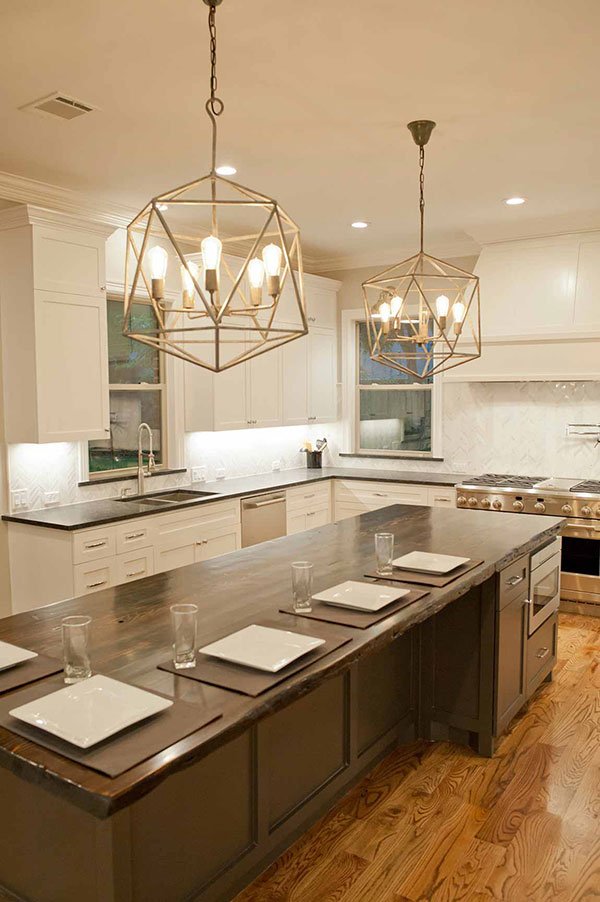
Layering Light for Depth
Layering different types of lighting is essential in modern kitchen design. Pendants can be part of a layered lighting scheme that includes task lighting, ambient lighting, and accent lighting. This approach not only enhances the functionality of the kitchen but also adds depth and dimension. Use pendants to provide focused task lighting over work areas, and complement them with ambient and accent lighting for a well-rounded effect.
Adjustability and Flexibility
Modern pendant lights often come with adjustable features, such as height-adjustable cords or dimmable bulbs, allowing you to tailor the lighting to your needs. Adjustable pendants can be raised or lowered depending on the activity, whether it’s cooking, dining, or entertaining. Dimmable options enable you to change the light intensity, creating the perfect ambiance for different occasions.
Choosing the Right Placement
Proper placement of pendant lights is crucial for achieving the desired effect. Typically, pendants are hung 30-36 inches above the countertop or table to provide adequate illumination without obstructing the view. For kitchen islands, consider spacing pendants 24-30 inches apart to ensure even lighting across the surface. Align the lights with key features of your kitchen, such as the sink or the center of the island, for optimal placement.
Coordinating with Kitchen Decor
Your choice of pendant lights should complement the overall decor of your kitchen. For a cohesive look, consider the materials and finishes of your kitchen fixtures and hardware. Pendant lights can either match or contrast with these elements to create a harmonious design. For example, brass or copper pendants can add warmth to a modern kitchen with stainless steel appliances, while black or chrome fixtures can enhance a sleek, contemporary space.
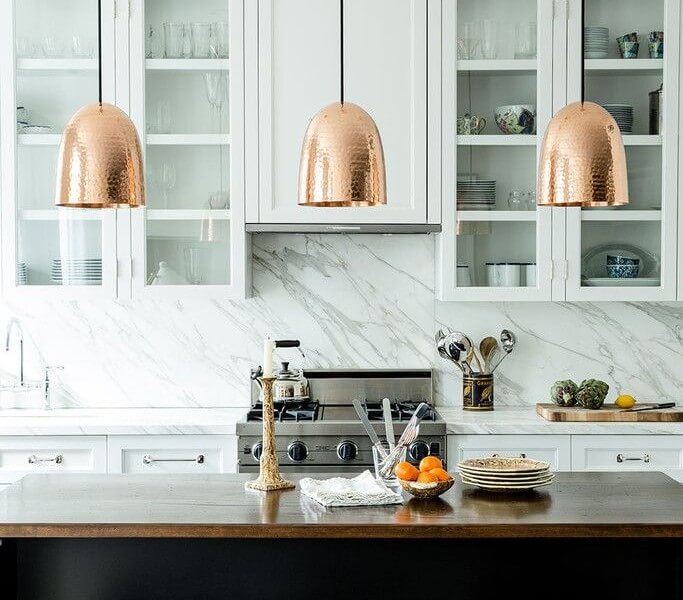
Recessed Lighting for a Sleek Look
Benefits of Recessed Lighting
Recessed lighting, also known as can lighting or downlights, offers a sleek and unobtrusive lighting solution for modern kitchens. These lights are installed flush with the ceiling, providing a clean, streamlined appearance. Recessed lighting is ideal for creating a minimalist look, as it integrates seamlessly into the ceiling without visible fixtures or cords.
Enhancing Functionality
Recessed lights are highly effective for providing overall illumination in the kitchen. They can be strategically placed to light up key areas such as the countertops, stove, and sink, enhancing visibility and making tasks easier. By positioning recessed lights at regular intervals, you can ensure even light distribution throughout the kitchen, eliminating shadows and dark spots.
Creating Zones with Recessed Lighting
Recessed lighting can be used to create different zones within the kitchen, each with its own specific lighting needs. For example, install a series of recessed lights above the kitchen island for task lighting, while a separate set can be placed over the dining area to create a more ambient atmosphere. This zoning approach allows you to tailor the lighting to various activities and areas in the kitchen.
Combining with Other Lighting Types
To achieve a well-balanced lighting scheme, combine recessed lighting with other types of fixtures, such as pendant lights or under-cabinet lights. Recessed lights provide the primary illumination, while other fixtures can add layers of light and create focal points. This combination enhances both the functionality and aesthetic appeal of your kitchen.
Energy Efficiency Considerations
Modern recessed lights are often equipped with LED bulbs, which are energy-efficient and long-lasting. LED bulbs consume less electricity and produce less heat compared to traditional incandescent or halogen bulbs, making them an environmentally friendly choice. Additionally, LEDs are available in various color temperatures, allowing you to choose a warm or cool light to match your kitchen’s design.
Installation Tips
Proper installation of recessed lighting requires careful planning to avoid issues such as glare or uneven lighting. Consider the ceiling height and the spacing between lights to achieve the desired effect. Recessed lights should be installed at least two feet away from walls to avoid casting harsh shadows. If you’re unsure about the installation process, consult a professional to ensure the lights are positioned correctly and safely.
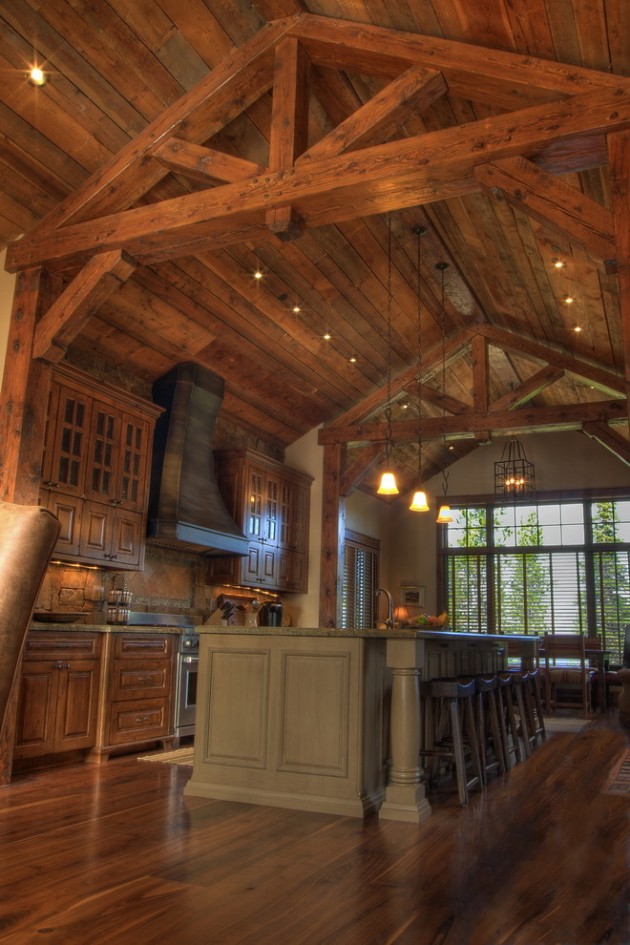
Under-Cabinet Lighting for Enhanced Visibility
Importance of Under-Cabinet Lighting
Under-cabinet lighting plays a crucial role in modern kitchen design by providing focused illumination on countertops and work areas. This type of lighting is installed on the underside of kitchen cabinets, directing light downward onto the workspace. Under-cabinet lights improve visibility for tasks like chopping, mixing, and reading recipes, making the kitchen more functional and efficient.
Types of Under-Cabinet Lighting
There are several types of under-cabinet lighting to choose from, including LED strips, puck lights, and fluorescent tubes. LED strips are popular for their flexibility and ease of installation, offering a continuous line of light. Puck lights provide focused, circular beams and can be spaced evenly for a consistent look. Fluorescent tubes offer a more traditional option but are less common in modern kitchens due to their bulkier appearance.
Installation Methods
Under-cabinet lights can be installed using different methods, depending on the type of lighting and the design of your cabinets. LED strips can be adhered directly to the underside of cabinets using adhesive backing, while puck lights and fluorescent tubes may require mounting brackets. Some under-cabinet lights are plug-in, making them easy to install without the need for hardwiring, while others require direct wiring for a more permanent solution.
Enhancing Aesthetics
In addition to their functional benefits, under-cabinet lights enhance the aesthetics of the kitchen by highlighting the backsplash, countertops, and cabinetry. They create a warm, inviting glow that adds depth and dimension to the space. Choose lights with a color temperature that complements the overall color scheme of your kitchen, whether it’s a warm, soft white or a cooler, bright white.
Energy Efficiency and Cost
LED under-cabinet lights are highly energy-efficient, consuming less power and generating less heat compared to traditional lighting options. They also have a longer lifespan, reducing the need for frequent replacements. While the initial cost of LED lights may be higher, their energy savings and durability make them a cost-effective choice in the long run.
Customization Options
Modern under-cabinet lighting systems often come with customization options, such as dimmable features or remote controls. Dimmable lights allow you to adjust the brightness to suit different tasks or moods, while remote controls provide convenient access to lighting settings. Some systems also offer color-changing options, enabling you to create various lighting effects to match the occasion or your kitchen’s decor.

Chandeliers and Statement Fixtures
Making a Bold Statement
Chandeliers and statement fixtures can add a touch of elegance and drama to a modern kitchen. These fixtures are designed to be eye-catching, serving as a focal point that draws attention and enhances the overall decor. Modern chandeliers often feature sleek lines, geometric shapes, and contemporary materials like metal, glass, or acrylic, making them suitable for various kitchen styles.
Choosing the Right Size
Selecting the right size for a chandelier or statement fixture is crucial to achieving a balanced look. A fixture that is too large can overwhelm the space, while one that is too small may not make the desired impact. Consider the size of your kitchen and the height of your ceilings when choosing a fixture. A general rule of thumb is to choose a chandelier with a diameter that is about one-third the width of the table or island it will hang over.
Placement and Positioning
Proper placement of chandeliers and statement fixtures is essential for both function and aesthetics. In the kitchen, these fixtures are typically hung above the island or dining area, providing both illumination and visual interest. Ensure that the fixture is positioned at the right height, usually 30-36 inches above the surface, to avoid obstructing views and to provide adequate lighting.
Complementing the Decor
The design of the chandelier or statement fixture should complement the overall decor of your kitchen. For a cohesive look, consider the materials, finishes, and shapes of your existing fixtures and hardware. A modern kitchen with clean lines and minimalistic design might benefit from a sleek, metal chandelier, while a kitchen with a more eclectic style could accommodate a fixture with bold colors or unique shapes.
Lighting Functionality
While chandeliers and statement fixtures are primarily decorative, they should also provide adequate lighting for the space. Choose fixtures with multiple bulbs or integrated LED lights to ensure sufficient illumination. Dimmable options can offer flexibility, allowing you to adjust the light intensity to create the desired ambiance for different activities or occasions.
Installation Considerations
Installing a chandelier or statement fixture may require additional support, especially if the fixture is large or heavy. Ensure that the electrical box and ceiling can support the weight of the fixture. It’s also important to consider the type of bulbs used and their compatibility with the fixture, as some chandeliers may require specific types of bulbs or wattages.
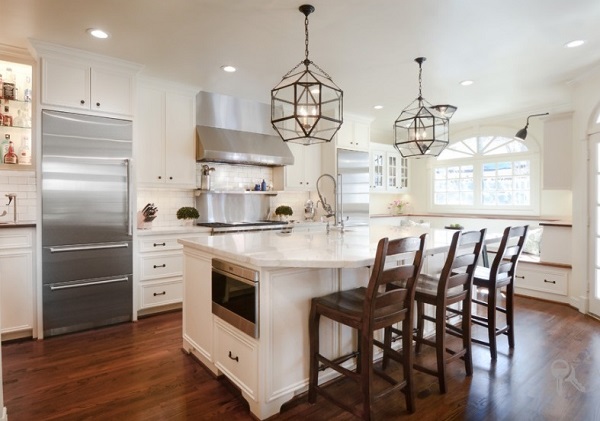
Track Lighting for Flexibility
Versatile and Adjustable
Track lighting offers a versatile and adjustable lighting solution for modern kitchens. This type of lighting consists of a series of light fixtures mounted on a track, which can be positioned to direct light where it’s needed. Track lighting is ideal for highlighting specific areas, such as countertops, artwork, or architectural features, and can be adjusted as your lighting needs change.
Customizable Configurations
One of the key advantages of track lighting is its customizable configurations. Tracks can be arranged in various shapes, such as straight lines, curves, or zigzags, to suit the layout of your kitchen. The individual light fixtures, or heads, can be moved along the track and angled to provide focused illumination, making it easy to adapt the lighting to different tasks and areas.
Modern Designs
Modern track lighting designs feature sleek, minimalistic fixtures that blend seamlessly with contemporary kitchen decor. Choose from a variety of finishes, such as chrome, brushed nickel, or matte black, to match your kitchen’s style. Track lighting heads come in different shapes and sizes, allowing you to create a cohesive or eclectic look depending on your design preferences.
Enhancing Task Lighting
Track lighting is particularly effective for enhancing task lighting in the kitchen. Position the lights to illuminate work areas like the stove, sink, or prep surfaces, ensuring that you have ample light for cooking and other activities. Adjustable heads allow you to direct light exactly where it’s needed, reducing shadows and improving visibility.
Energy Efficiency
Modern track lighting systems often use LED bulbs, which are energy-efficient and long-lasting. LEDs consume less power and produce less heat compared to traditional incandescent bulbs, making them a cost-effective and environmentally friendly choice. Additionally, LED track lights are available in various color temperatures, allowing you to customize the lighting to your preferences.
Installation and Maintenance
Installing track lighting requires careful planning to ensure the track is positioned correctly and securely. Tracks can be mounted to the ceiling or wall, and some systems offer flexible tracks that can be bent or shaped to fit your design. Regular maintenance involves cleaning the track and light fixtures to keep them free of dust and ensuring that the bulbs are functioning properly.

Smart Lighting Solutions
Integrating Technology
Smart lighting solutions bring the convenience of modern technology to kitchen lighting. These systems allow you to control your lights using a smartphone, tablet, or voice commands through a smart assistant like Alexa or Google Assistant. Smart lighting can be programmed to adjust automatically based on your schedule, creating a more convenient and energy-efficient lighting solution.
Customizable Lighting Scenes
Smart lighting systems offer the ability to create customizable lighting scenes for different activities and times of day. For example, you can set a bright, focused scene for cooking and a softer, ambient scene for dining or entertaining. These scenes can be activated with a simple tap on your smartphone or through a voice command, making it easy to adjust the lighting to suit your needs.
Energy Efficiency and Automation
Smart lighting solutions often include features like motion sensors and timers, which help to conserve energy by turning lights on or off automatically. Motion sensors can detect when you enter or leave the kitchen, ensuring that lights are only on when needed. Timers can be set to turn lights on or off at specific times, reducing energy consumption and enhancing security.
Voice Control and Integration
Voice control is a key feature of smart lighting systems, allowing you to adjust your lights without needing to touch a switch or device. Integration with smart assistants enables hands-free operation, making it easy to turn lights on or off, dim them, or change their color with simple voice commands. This feature is particularly useful when your hands are full or when you want to create a specific ambiance quickly.
Color and Temperature Adjustment
Smart lighting systems often offer the ability to adjust the color and temperature of the light, allowing you to customize the lighting to match your mood or activity. Choose from a range of white tones, from warm to cool, or explore various colors to create different effects. This flexibility enhances the overall experience in the kitchen, making it more adaptable to different occasions.
Installation and Compatibility
Installing smart lighting typically involves replacing traditional light bulbs with smart bulbs or adding smart switches and dimmers to your existing setup. Ensure that the smart lighting system you choose is compatible with your home’s network and other smart devices. Some systems may require a hub for full functionality, while others can connect directly to your Wi-Fi network.
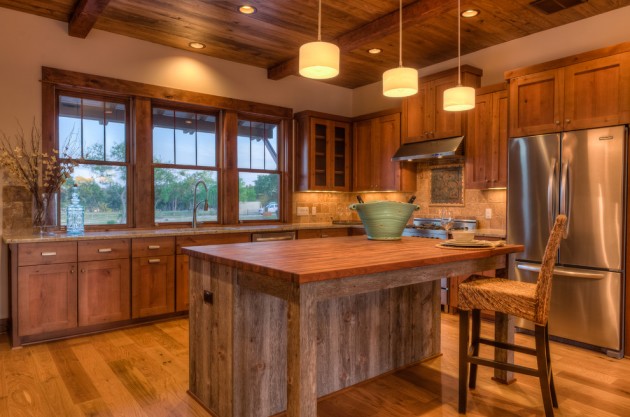
Common Mistakes to Avoid
Neglecting Task Lighting
A common mistake in kitchen lighting is neglecting task lighting. While ambient lighting provides overall illumination, task lighting is essential for specific activities such as cooking, chopping, and reading recipes. Without adequate task lighting, work areas can be dim, leading to eye strain and reducing the kitchen’s functionality. Incorporate under-cabinet lights, pendant lights, or track lighting to enhance visibility in key areas.
Overlooking Dimming Options
Many homeowners overlook the importance of dimming options in kitchen lighting. Dimmers allow you to adjust the brightness of your lights to suit different tasks and create the desired ambiance. Without dimming capabilities, you may be stuck with lights that are too bright or too dim for certain activities. Ensure that your lighting fixtures are compatible with dimmer switches to provide flexibility in light intensity.
Choosing the Wrong Color Temperature
Choosing the wrong color temperature can affect the look and feel of your kitchen. Color temperature ranges from warm (yellowish) to cool (bluish) light. Warm light creates a cozy atmosphere, while cool light enhances visibility and modernity. Select a color temperature that complements your kitchen’s design and meets your functional needs. Avoid mixing different color temperatures, as this can create an unbalanced and inconsistent look.
Inadequate Light Placement
Improper light placement is another common mistake that can impact the effectiveness of your kitchen lighting. Lights that are placed too far apart can create dark spots, while lights that are too close together can cause glare and excessive brightness. Plan the placement of your lights carefully, considering factors like the size of your kitchen, the height of the ceilings, and the specific areas that need illumination.
Overlooking Energy Efficiency
Energy efficiency is often overlooked when selecting kitchen lighting. Choosing energy-efficient options like LED bulbs can reduce electricity consumption and lower utility bills. LED lights also have a longer lifespan and produce less heat, making them a sustainable choice. Consider the energy efficiency of your lighting fixtures and bulbs to save money and reduce your environmental impact.
Ignoring Aesthetic Integration
Ignoring how lighting integrates with your kitchen’s overall aesthetics can result in a disjointed look. Lighting fixtures should complement the style, color scheme, and materials used in your kitchen. Mismatched fixtures or styles can detract from the kitchen’s design and create visual clutter. Select lighting that enhances the decor and contributes to a cohesive, well-designed space.

What type of lighting is best for kitchen task areas?
The best type of lighting for kitchen task areas is bright, focused light that enhances visibility. Options like under-cabinet lights, pendant lights, and track lighting provide direct illumination on work surfaces, making it easier to perform tasks such as chopping, cooking, and reading recipes. Ensure that the task lighting is positioned to minimize shadows and glare for optimal functionality.
How can I create a balanced lighting scheme in my kitchen?
To create a balanced lighting scheme in your kitchen, incorporate a combination of ambient, task, and accent lighting. Ambient lighting provides overall illumination, task lighting focuses on specific work areas, and accent lighting highlights decorative elements or architectural features. Layering these types of lighting creates depth and dimension, enhancing both the functionality and aesthetic appeal of the kitchen.
What are the benefits of LED lighting in the kitchen?
LED lighting offers several benefits for the kitchen, including energy efficiency, longevity, and versatility. LEDs consume less electricity and produce less heat compared to traditional bulbs, reducing energy costs and environmental impact. They also have a longer lifespan, reducing the need for frequent replacements. LED lights are available in various color temperatures and styles, making them suitable for different lighting needs and design preferences.
How do I choose the right pendant lights for my kitchen island?
When choosing pendant lights for your kitchen island, consider factors such as size, style, and placement. The size of the pendants should be proportional to the size of the island, and the style should complement the overall kitchen decor. Typically, pendants are hung 30-36 inches above the countertop and spaced 24-30 inches apart. Choose a design that provides adequate illumination and enhances the aesthetic of the kitchen.
Can smart lighting improve my kitchen experience?
Yes, smart lighting can significantly improve your kitchen experience by offering convenience, flexibility, and energy efficiency. Smart lighting systems allow you to control your lights using a smartphone or voice commands, making it easy to adjust brightness, change colors, or create lighting scenes. Features like motion sensors and timers enhance energy efficiency, while customization options enable you to tailor the lighting to different activities and moods.
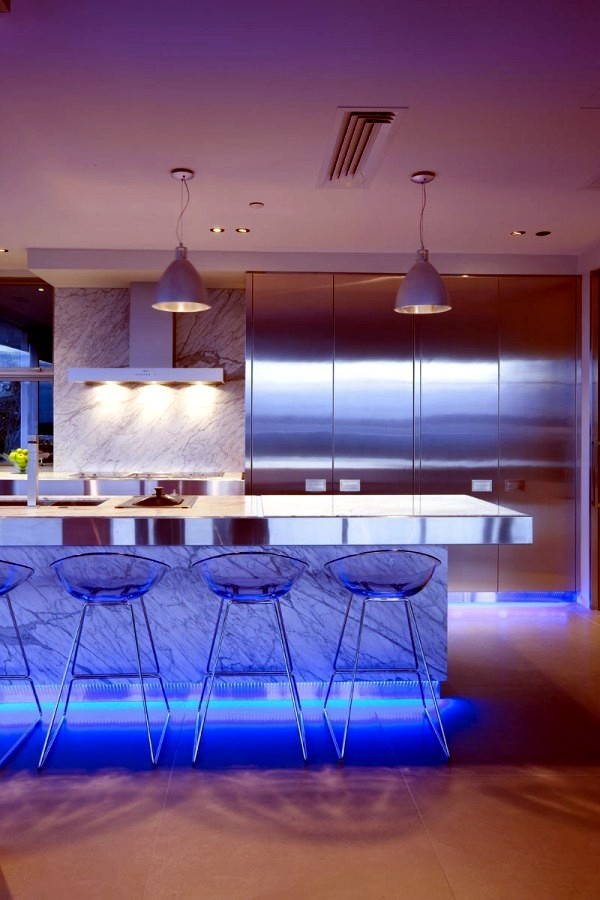
Related Posts:
- Menards Kitchen Island Lighting
- Pedestal Lights For Kitchen
- Xenon Kitchen Under Cabinet Lighting
- 4 Bulb Fluorescent Light Fixtures Kitchen
- Kitchen Ceiling Lighting Layout
- Best Overhead Kitchen Lighting
- Halogen Recessed Lights Kitchen
- Pictures Of Kitchen Light Fixtures
- Track Lighting Above Kitchen Island
- Pinterest Pendant Lights Kitchen